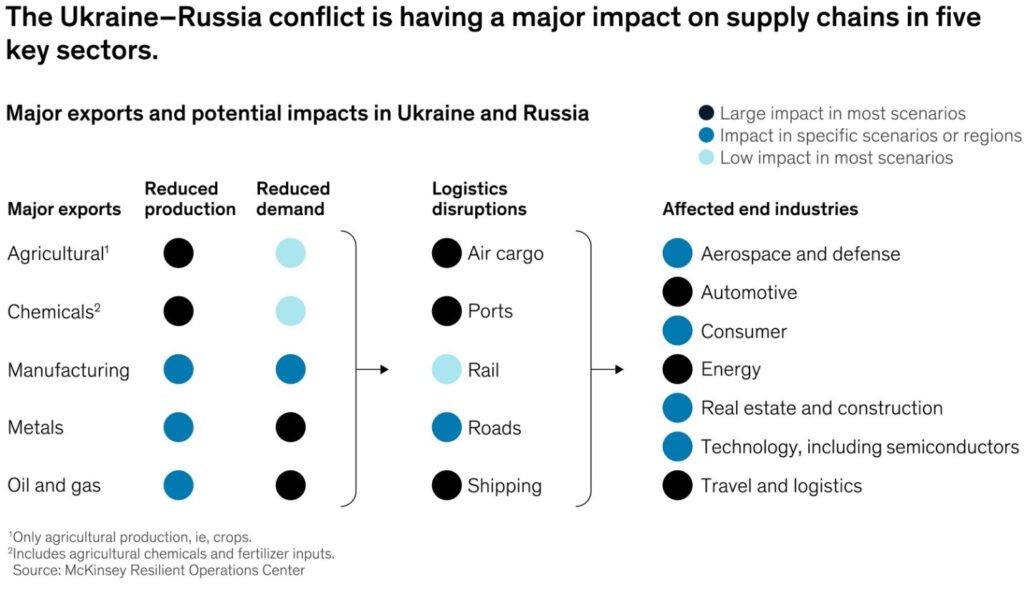McKinsey: The COVID-19 pandemic created significant disruption to global supply chains, and then the Russian invasion of Ukraine caused a considerable humanitarian crisis in Europe since the Second World War.
The invasion of Ukraine compounded supply chain troubles in critical sectors, including agriculture, automotive, energy, and food. The frequency and magnitude of the disruptions increased, and structural reform may be needed to restore predictability to a system premised on ever-increasing cost optimization.
The effects of disruptions on supply chains may be temporary, but permanent effects may occur beneath the surface. Leaders must install the building blocks of structural reform. Nonetheless, structural reform may be the only way for leaders to restore the resilience that companies depend on from their supply chains, as evident from several short- and longer-term implications of the disruptions.
Key export categories are suffering immediate supply shocks.
The invasion of Ukraine has had an immediate impact on several export sectors, including agriculture, chemicals, manufacturing, metals, and oil and gas. Transport delays and spiralling input costs have become more frequent. Companies are exiting operations in Russia or refusing to carry Russian goods, creating several effects, including greater unpredictability and the unavailability of critical supply chain inputs.
These effects may have a more considerable impact on companies than inflation. Supply chain operators face several emerging challenges, including an increased focus on securing food, energy, and other critical materials, a shift in demand back to services, and a shift in inventory management strategies due to the US Securities and Exchange Commission’s carbon disclosure ruling.

Critical steps to optimal resilience
CEOs should consider implementing cross-silo efforts to ensure an agile response to fast-moving events. Create a nerve center to consolidate organizational reactions to issues. The nerve center could be organized under four categories:
- People
- operating cadence
- decision-enabling tools
- early-warning system
The CEOs should also plan for extreme supply-and-demand disruptions by ordering components earlier than usual, accounting for the higher cost of energy, materials, and transportation, and reprioritizing production if shortages seem inevitable. Examine the risks in supply chains and set up controls to minimize their effects. CEOs may focus on quick responses during a crisis but also need to consider building longer-term resilience in supply chains. Transparency, diversification, and keeping safety stocks on hand may be difficult to justify. Construct a digital twin of the most critical parts of a supply chain to help organizations pinpoint hidden suppliers or materials flows and expose previously invisible interdependencies.
Tackling the medium-term challenge
The integral factor here is to create several what-if scenarios to determine what would happen if the supply of vessels decreased by 25 percent. Then prioritize and mitigate the parts of the supply chain that fail most often. E-commerce does not necessarily promote positive outcomes, and success depends on capturing high-value demand at an acceptable margin.
The global economy may slow down in the coming year, with the US posting strong growth and job creation numbers, but prices in several sectors are spiralling quickly.
In past economic downturns, customers stayed with companies close to their core offerings. These companies emerged from the downturn more substantial than their competitors. CEOs recognize that to achieve long-term resilience; they may need to convince investors to accept resilience as the new table stakes and change their view of expected risk-adjusted returns.





